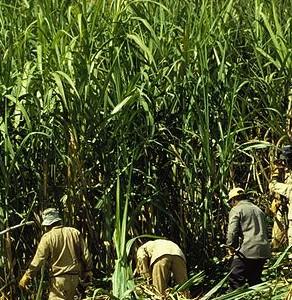 This post is presented by SBE, the Society for Biological Engineering--a global organization of leading engineers and scientists dedicated to advancing the integration of biology with engineering.
This post is presented by SBE, the Society for Biological Engineering--a global organization of leading engineers and scientists dedicated to advancing the integration of biology with engineering.

After the oil shock of the 1970's the U.S .wanted to escape
Opec's tight, constricting embrace. On the rebound, along came corn: midwestern and very available, with huge surpluses as far as the eye could see. Giddy, love-sick politicians went a
courtin':
'The corn is as high as an elephant's eye,
An' it looks like it's climbin' clear up to the sky.
We all know what happened to the
ethanol romance once the kids came along. First, it wasn't petroleum--but an alcohol with less energy per gallon than oil. Since ethanol absorbs water, causes engine corrosion and is often produced in coal-powered plants, it inflicted a PR black eye along with an embarrassing carbon footprint. Adding insult to injury, corn supplies limited the ethanol industry's size (you don't have to read Cosmo to predict the results), and forced producers to compete with people for food. Divorce...
Second Generation Biofuels
Second generation biofuel companies want to replace ethanol. They're striving to create hydrocarbon substitutes similar enough to existing fuels that they're called "drop-ins," reflecting the ease of replacing one with the other. Since ethanol can't replace diesel or aviation fuel, success would automatically increase market size.

Drop-ins also have advantages over oil. Refineries have to carefully tweak crude which comes in different chemical compositions from all over the globe. But genetically engineered hydrocarbons guarantee consistency, and the feedstock is cheaper--replacing corn with
Brazilian sugarcane. These drop-in companies are now teaming up with large oil companies, listing themselves on the stock market, and building their own factories.
New companies and products
Codexis, a San Francisco Bay area firm which makes enzymes and engineered

bacteria, was the first on
Nasdaq. With money from
Shell Oil and sugar from
Cosan, Brazil's
third largest sugar producer, Codexis plans to build a new factory capable of producing 2.5 million barrels of drop-in fuel a year. Eventually, Codexis's enzymes and bacteria will turn Brazilian sugar into 12 to 16 carbon atom molecules called straight-chain alkanes, diesel fuel's main ingredient.
Amryis, another Bay area firm, has also joined Nasdaq. Originally known as a synthetic biology company with a malaria drug portfolio, it now touts its own drop-in biodiesel. Amryis has hooked up with
Total, a large French oil company and Santelisa Vale, Brazil's second largest sugar company. According to
The Economist:
Amyris's biodiesel is made of more complicated molecules than Codexis's (they are known, technically, as terpenes), and the firm employs genetically engineered yeast, rather than bacteria... But Brazilian sugar is again used as the raw material...
These two global partnerships are being chased by several other startups.
Solazyme, one of the most interesting, is a cross-town rival using single-celled algae to make its fuel. That's hardly a unique idea. Several firms, including Craig Venter's
Synthetic Genomics, which relies on oil giant
Exxon's financial muscle, are using algae and sunlight photosynthesis to develop drop-in fuels.

But Solazyme has taken a different approach. Brazilian sugar. Instead of processing sunlight, Solazyme's algae is kept in the dark, where the sugar is added, turning it into oil. This process is already generating revenue and a contract with the US Navy, which has mandated that by 2020 half of it's fuel (about 4 billion gallons a year of diesel and jet fuel) will come from renewables. Just this year Solazyme has begun a trial supplying fuel for the Navy from its production facilities.
To scale up, biofuels will need a new diet
Sugar's recent success, like corn's before it, has caused the price to rise. If biofuel companies really want to become global players, they'll need more feedstocks. And that is still a question mark. An untested assumption had cellulose taking over from sugar and starch. Unfortunately, making fuel out of cellulose with current technology is still very expensive. Crude oil has to reach $120 a barrel before cellulosic ethanol is competitive.
Nebraskastan
Most of the players are waiting for sheer scale to partially drive down prices.

They're also assuming that energy-rich, fast growing grasses like
switchgrass and
sorghum are the future. Some are already imagining America's desolate prairies transformed into huge biofuel reserves. Welcome to Nebraskastan. But even with the most optimistic scenarios, electric vehicles wait on the horizon. If the world goes electric, these companies may be left to fight over aviation table scraps.
Read the original article in The Economist.
 This post is presented by SBE, the Society for Biological Engineering--a global organization of leading engineers and scientists dedicated to advancing the integration of biology with engineering.
This post is presented by SBE, the Society for Biological Engineering--a global organization of leading engineers and scientists dedicated to advancing the integration of biology with engineering.
 After the oil shock of the 1970's the U.S .wanted to escape Opec's tight, constricting embrace. On the rebound, along came corn: midwestern and very available, with huge surpluses as far as the eye could see. Giddy, love-sick politicians went a courtin':
After the oil shock of the 1970's the U.S .wanted to escape Opec's tight, constricting embrace. On the rebound, along came corn: midwestern and very available, with huge surpluses as far as the eye could see. Giddy, love-sick politicians went a courtin':
 Drop-ins also have advantages over oil. Refineries have to carefully tweak crude which comes in different chemical compositions from all over the globe. But genetically engineered hydrocarbons guarantee consistency, and the feedstock is cheaper--replacing corn with Brazilian sugarcane. These drop-in companies are now teaming up with large oil companies, listing themselves on the stock market, and building their own factories.
Drop-ins also have advantages over oil. Refineries have to carefully tweak crude which comes in different chemical compositions from all over the globe. But genetically engineered hydrocarbons guarantee consistency, and the feedstock is cheaper--replacing corn with Brazilian sugarcane. These drop-in companies are now teaming up with large oil companies, listing themselves on the stock market, and building their own factories.
 bacteria, was the first on Nasdaq. With money from Shell Oil and sugar from Cosan, Brazil's third largest sugar producer, Codexis plans to build a new factory capable of producing 2.5 million barrels of drop-in fuel a year. Eventually, Codexis's enzymes and bacteria will turn Brazilian sugar into 12 to 16 carbon atom molecules called straight-chain alkanes, diesel fuel's main ingredient.
Amryis, another Bay area firm, has also joined Nasdaq. Originally known as a synthetic biology company with a malaria drug portfolio, it now touts its own drop-in biodiesel. Amryis has hooked up with Total, a large French oil company and Santelisa Vale, Brazil's second largest sugar company. According to The Economist:
bacteria, was the first on Nasdaq. With money from Shell Oil and sugar from Cosan, Brazil's third largest sugar producer, Codexis plans to build a new factory capable of producing 2.5 million barrels of drop-in fuel a year. Eventually, Codexis's enzymes and bacteria will turn Brazilian sugar into 12 to 16 carbon atom molecules called straight-chain alkanes, diesel fuel's main ingredient.
Amryis, another Bay area firm, has also joined Nasdaq. Originally known as a synthetic biology company with a malaria drug portfolio, it now touts its own drop-in biodiesel. Amryis has hooked up with Total, a large French oil company and Santelisa Vale, Brazil's second largest sugar company. According to The Economist:
 But Solazyme has taken a different approach. Brazilian sugar. Instead of processing sunlight, Solazyme's algae is kept in the dark, where the sugar is added, turning it into oil. This process is already generating revenue and a contract with the US Navy, which has mandated that by 2020 half of it's fuel (about 4 billion gallons a year of diesel and jet fuel) will come from renewables. Just this year Solazyme has begun a trial supplying fuel for the Navy from its production facilities.
But Solazyme has taken a different approach. Brazilian sugar. Instead of processing sunlight, Solazyme's algae is kept in the dark, where the sugar is added, turning it into oil. This process is already generating revenue and a contract with the US Navy, which has mandated that by 2020 half of it's fuel (about 4 billion gallons a year of diesel and jet fuel) will come from renewables. Just this year Solazyme has begun a trial supplying fuel for the Navy from its production facilities.
 They're also assuming that energy-rich, fast growing grasses like switchgrass and sorghum are the future. Some are already imagining America's desolate prairies transformed into huge biofuel reserves. Welcome to Nebraskastan. But even with the most optimistic scenarios, electric vehicles wait on the horizon. If the world goes electric, these companies may be left to fight over aviation table scraps.
Read the original article in The Economist.
They're also assuming that energy-rich, fast growing grasses like switchgrass and sorghum are the future. Some are already imagining America's desolate prairies transformed into huge biofuel reserves. Welcome to Nebraskastan. But even with the most optimistic scenarios, electric vehicles wait on the horizon. If the world goes electric, these companies may be left to fight over aviation table scraps.
Read the original article in The Economist.





